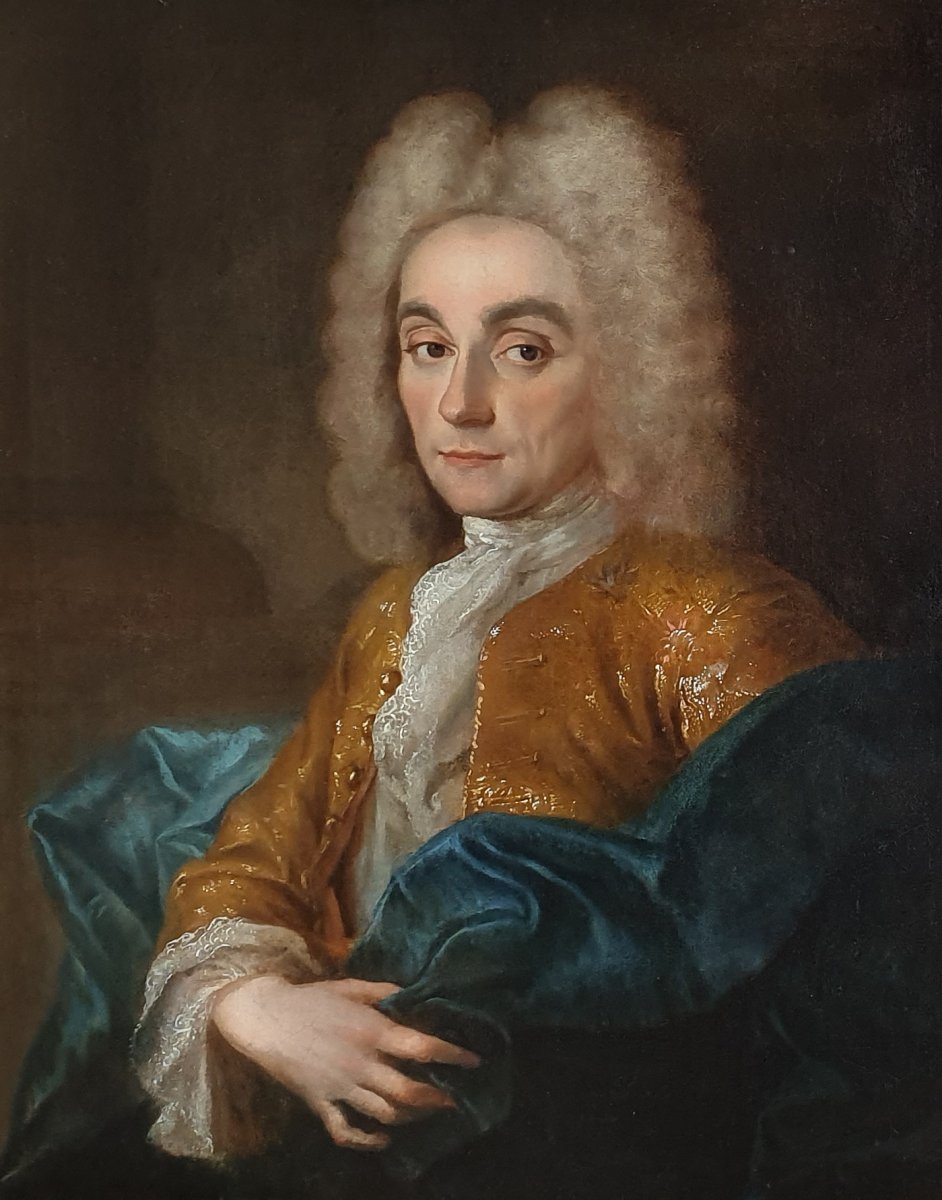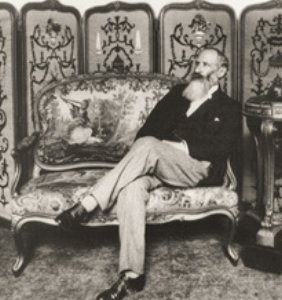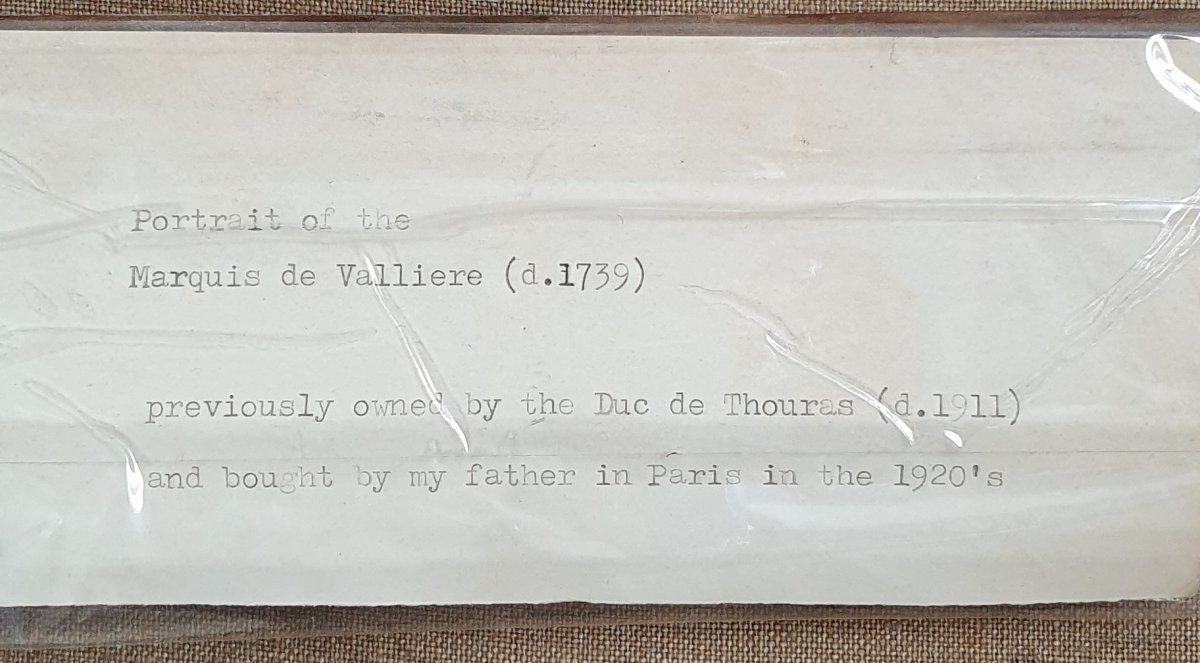"Portrait Of Charles-françois, Duc De La Vallière (1670-1739) C.1720 Attrib Jean-baptiste Oudry "
This fine portrait depicts a member of French aristocracy – the portrait passed through the French noble family, Duchy of La Vallière, for over 200 years until it was sold in the 1920’s. Painted circa 1720 it is a charming example from one of France’s most noteworthy painters, Jean Baptiste Oudry.The gentleman depicted in this portrait is Charles François de La Baume Le Blanc, the son of Jean François de La Baume Le Blanc, Marquis de La Vallière (1642-1676) and Gabrielle Glé de La Cotardais (c.1648-1707). In June 1698 he married Marie Thérèse de Noailles (1684-1784), daughter of General Anne Jules, Duc de Noailles, Marshal of France and Marie Françoise de Bournonville.
The Duchy of La Vallière was a French peerage created in 1667 by Louis XIV for his mistress Louise Françoise de La Baume Le Blanc when she had been replaced in his affections by Madame de Montespan. Louise de La Vallière, known as Mademoiselle de La Vallière was the mistress of Louis XIV from 1661 to 1667 and the mother of six of Louis’ children, though only two of them survived infancy. The Lordship of La Vallière had been owned by Louise’s family since the time of her great grandfather Laurent Le Blanc; Laurent’s only son, Jean, taking on the name of La Baume Le Blanc in his lifetime along with the barony of La Papelardière. When Louise left court, she gave the duchy to her only daughter Marie Anne de Bourbon, Mademoiselle de Blois and widow of Louis Armand de Bourbon, Prince de Conti. Widowed and childless, in 1698 Marie Anne, in turn, gave the title to her cousin, Charles François de La Baume Le Blanc.
Charles’s son, Louis César (1708-1780) succeeded to the Duchy of La Vallière on the death of his father in August 1739. Louis César was on familiar terms with Louis XV and his mistress Madame de Pompadour, and was a first cousin to Louis Jean Marie de Bourbon, a grandson of Madame de Montespan and Louis XIV.
The portrait descended for 200 years within the family to Louis Charles de La Trémoille (1838-1911), 9th duc de Thouars (he was Duke of La Trémoille and Thouars as well as Prince of Talmont and Count of Laval). Louis Charles was a French historian, archivist, bibliophile and collector. He studied and had a keen interest in the La Trémoïlle family archives, held in his home, the Renaissance Château de Serrant - the Chateau is home to one of the largest French private libraries. Amazed by the wealth of family records, he devoted his life to exploring them and gave access to researchers, including Paul Marchegay (1812-1885) and the historian Thouarsais Hugues Imbert (1822-1882). On August 23, 1886, he accompanied Philippe of Orleans (1869-1926), who was a close friend, in a carriage whilst enroute to exile in England.
There are two possibilities how it descended to him. It probably passed to Louis César’s only child, Adrienne Emilie Félicité de La Baume Le Blanc (b.1740) who married Louis Gaucher, Duc de Châtillon (1737-1762). Their daughter Louise-Emmanuelle de Châtillon married Charles Bretagne Marie de La Trémoille (1764-1839), whose son was Louis Charles de La Trémoïlle (1838-1911). Another possibility is, given the extraordinary age that Marie Thérèse de Noailles lived to, the portrait was inherited or given directly to her great-grand-daughter and thus ended up with the Trémoille family.
The last in line of the ancient and noble La Trémoille family was Louis Jean Marie de La Trémoille (1910-1933), prince and 12th duc de La Trémoille, 13th duc de Thouars, 13th prince de Tarente and 17th prince de Talmond, died unmarried and childless at the age of 23 in Hampshire England. It was noted in the New York Times at the time that his mysterious death by fire in England evoked the martyrdom at English hands of Joan of Arc five centuries earlier, who had been betrayed by the young duke's ancestor, Georges de La Trémoïlle, founder of the family's fortune in France.
The fine brocade coat, the blue mantle and the expensive wig are elements alluding to the wealth of this sitter. France was the leading exponent of fashion to the rest of Europe and it was crucial for the upper echelons of society to maintain a high standard in appearance.
Born in Paris on March 17, 1686, Jean-Baptiste Oudry was the son of a minor painter and art dealer, Jacques Oudry (c.1661-1720), and his wife, née Nicole Papillon. In 1706 his father was made director of the Académie de Saint-Luc, the old painters' guild that was the only serious competition to the more prestigious and influential Académie royale de peinture et de sculpture. Jacques Oudry taught his son the technical aspects of his art, and the youth attended drawing courses at the Académie de Saint-Luc and the Académie royale. In 1704 he received some training from Michel Serre (1658-1733), a cousin of the portraitist Hyacinthe Rigaud (1659-1743).
In 1707, Oudry began a five-year apprenticeship with Rigaud's main competitor and renowned artist, Nicolas de Largillierre (1656-1746). Under his tutelage he refined his sense of colour and his remarkable skill with still life and portraiture. In 1708 Oudry was inducted into the Académie de Saint-Luc and two years later he married Marie Marguerite Froissé, by whom he would have many children, including a son, Jacques Charles (1722/1723-1778), who also became a painter.
In 1719 Oudry was elected to membership in the Académie royale. From the start of his career, he was attracted to the painting of flora and fauna in the manner of the Dutch animal painters Frans Snyders (1579-1657), Jan Baptist Weenix (1621-1660/1661), and Melchior d'Hondecoeter (1636-1695) and his work is so well refined and regarded that examples are currently held in the National museum Stockholm, the Royal Palace Stockholm, and the Wallace Collection London.
Oudry's patron, Henri Camille, the chevalier de Beringhen, introduced the painter to the young Louis XV, and he was soon made painter in ordinary of the royal hunts and granted a studio and lodgings for himself and his family in the Tuileries palace. Oudry's favour at court was such that in March 1726 he exhibited the contents of his studio in the Grands Appartements at Versailles. That year another of his patrons, the finance minister Louis Fagon (1680-1744), obtained for him the position of painter to the Beauvais tapestry works, whose director he became in 1734. During his tenure he completely overhauled the administration of the manufactory, imposing strict technical standards on the weavers, whom he compelled to adhere more strictly to the painted cartoons. In a stroke of genius he hired François Boucher (1703-1770) as principal designer at Beauvais. In 1733 he began designing for the Gobelins tapestry factory one of eighteenth-century France's greatest masterpieces of the decorative arts, the nine-panel series of the Royal Hunts (modelli in the Musée Camondo, Paris, and full-size painted cartoons in the Musée de Fontainebleau and the Musée du Louvre), which were woven only twice (Musées des domaines nationaux de Compiègne and Florence, Palazzo Pitti). Oudry’s tapestries, like his paintings, were highly regarded and were sought not only by Louis XV but by Tsar Peter the Great of Russia, the queen of Sweden, and the Grand Duke Friedrich of Mecklenburg-Schwerin (1717-1785).
Oudry was made associate professor in the Académie royale in 1739 and full professor in 1743. From 1737 until 1753 he was a regular exhibitor at the Salon in the Palais du Louvre, where he and his family were provided lodgings in 1744.
Jean Baptiste Oudry died at Beauvais on April 30, 1755, after experiencing several apoplectic strokes.
Provenance:
The sitter and by descent within the family (for 200 years) until sold in the 1920s;
Paris private collection, and by descent with the family until sold recently
Measurements:
Height 57cm, Width 49cm framed (Height 22.5”, Width 19.25” framed)



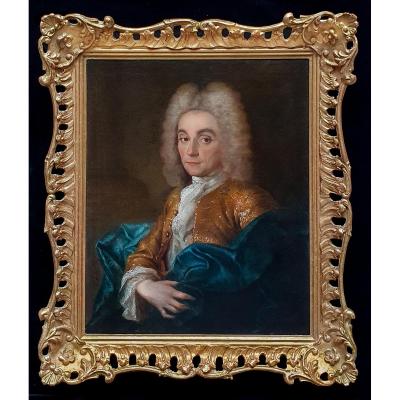
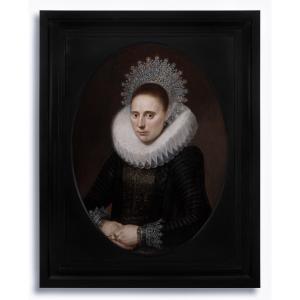



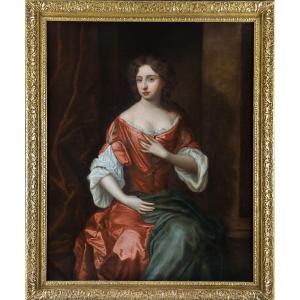


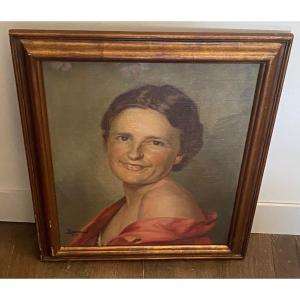
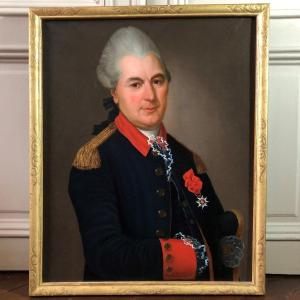
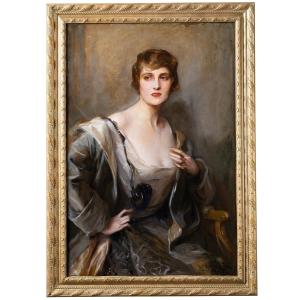






 Le Magazine
Le Magazine Rivista Artiquariato
Rivista Artiquariato TRÉSORS magazine
TRÉSORS magazine

